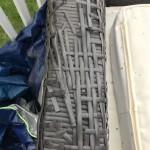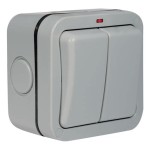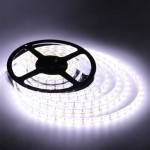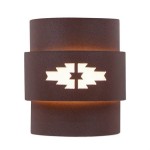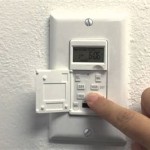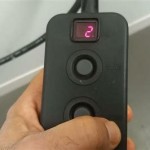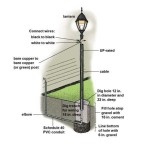How To Install Flood Lights Outdoor
Installing flood lights outdoors can greatly enhance your home's security and curb appeal. By illuminating dark areas, flood lights can deter potential intruders and make your property safer for your family and visitors. However, proper installation is crucial to ensure optimal performance and longevity.
Choosing the Right Flood Lights
The first step in installing flood lights is choosing the appropriate fixtures. Consider the size and shape of the area you need to illuminate, as well as the desired brightness and color temperature. LED flood lights are energy-efficient and long-lasting, making them a popular choice for outdoor use.
Determining the Placement
The placement of flood lights is important for maximizing their effectiveness. Mount the lights at a height of at least 8 feet to prevent glare from shining directly into your eyes. Position the lights to illuminate the desired area without creating dark spots or overexposing specific areas.
Wiring and Connections
Electrical wiring is a critical aspect of flood light installation. Ensure you have the necessary tools and safety gear before attempting any electrical work. Connect the flood lights to a dedicated circuit protected by a breaker or fuse. Use weatherproof wire connectors to prevent moisture damage and ensure reliable connections.
Mounting the Fixtures
Securely mount the flood lights to a stable surface, such as a wall or the underside of an eave. Use mounting brackets designed for the specific type of flood light you are installing. Ensure the lights are level and firmly attached to prevent vibrations or damage due to wind or other environmental factors.
Adjusting and Aiming
After mounting the flood lights, adjust the angle and direction of the beams. Use the built-in adjustment screws or a separate aiming tool to focus the light on the desired area. Avoid pointing the lights directly at windows or other sensitive areas to prevent glare and discomfort.
Testing and Maintenance
Once the flood lights are installed, test them thoroughly to ensure proper operation. Turn the lights on and off several times to check for any flickering or other issues. Regularly inspect the lights and clean them as needed to maintain their performance and aesthetic appeal.
Conclusion
By following these essential aspects, you can successfully install flood lights outdoors, providing your home with enhanced security, visibility, and curb appeal. Proper planning, careful execution, and regular maintenance will ensure that your flood lights continue to illuminate your property for years to come.

How To Install Flood Lights Zoro Com

How To Install Flood Lights

How To Install Flood Lights With Pictures Wikihow

How To Install Outdoor Floodlights True Value

How To Install A Flood Light The Home Depot

How To Install Floodlights Safe Watertight And Properly Grounded

How To Professionally Install Flood Lights Into A Garden

How To Install Led Flood Lights Tips And Tricks For A Successful Diy Project Simple Lighting Blog

How To Install A Flood Light The Home Depot

How To Install Flood Lights
Related Posts
